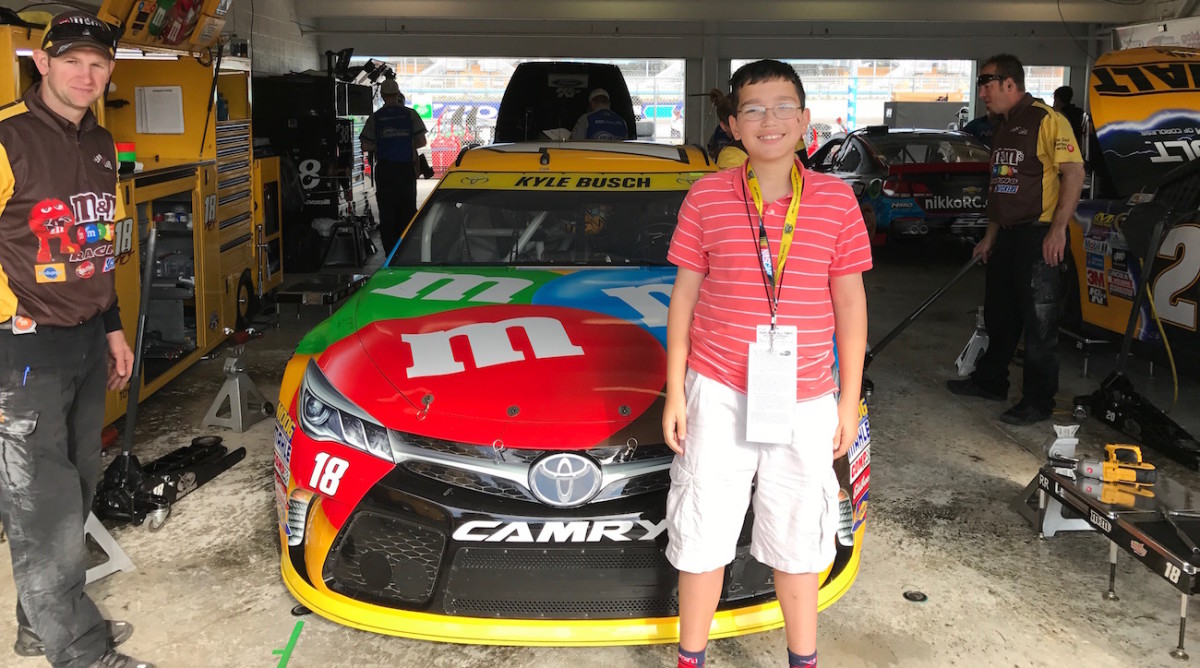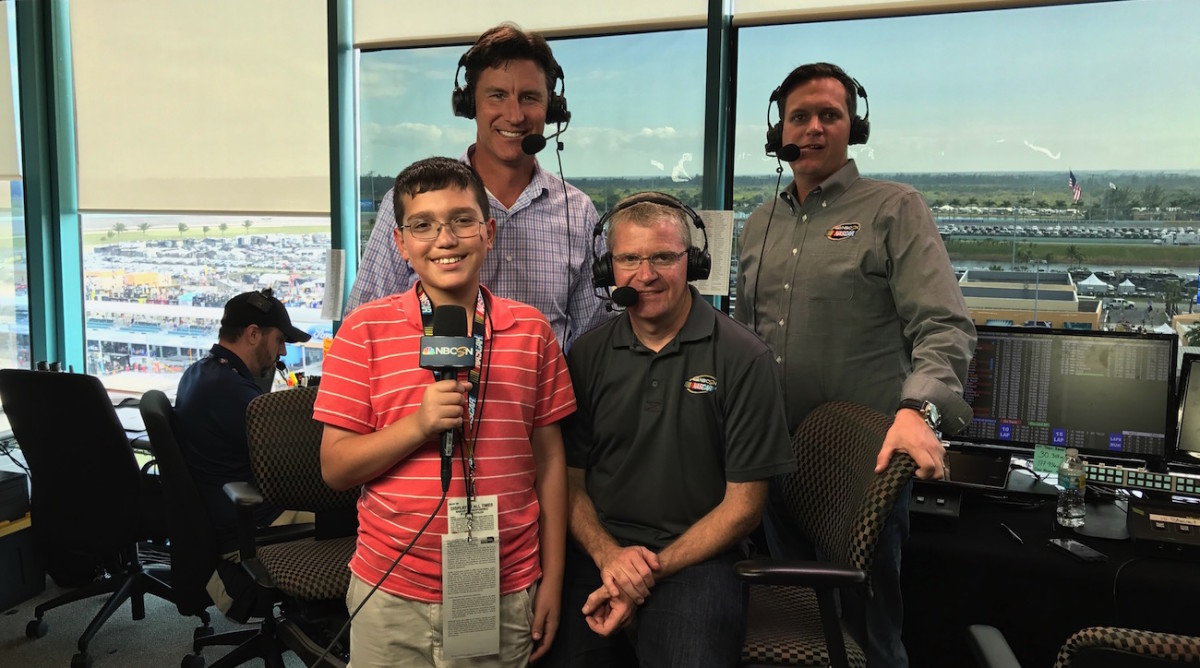My First NASCAR Race


There are very few sporting events that are quite like a NASCAR race. With at least 40 stock cars going 150 miles per hour, NASCAR is as loud as any sport out there. When the cars make their turn to the next lap, it almost feels like an earthquake.
I experienced my first race this weekend at Homestead Miami Speedway. I was covering the Ford EcoBoost 300, the race that determines who is the champion of the Xfinity Series, which is the second-tier division of NASCAR. Daniel Suarez came in first and took home the title.
My day started with three interviews. I talked to Sprint Cup driver Matt Kenseth and Xfinity drivers Blake Koch and Bubba Wallace Jr. All three of them became involved with stock car racing in different ways. Kenseth said he started to like racing when he was growing up in Wisconsin. He would go out to the local short track every Saturday night to watch his three uncles race.
Wallace had always loved cars, but he knew he wanted to race when he was nine. Koch is definitely the outlier of the trio; he didn’t start racing in cars until he was 20. Koch began racing dirt bikes when he was nine, and he decided to stop after he suffered some major injuries. His stepdad thought about buying a racecar, and he asked Koch if he wanted to get into stock car racing. After just three years in a car, Koch was already driving in the Xfinity Series.
These three looked up to many different drivers while they were growing up. Kenseth didn’t get to see much NASCAR since he grew up in Wisconsin, so he says he looked up to his dad, with whom he raced as a child. Short track legend Joe Shear was another driver who inspired Kenseth to become a NASCAR driver.
Koch looks up to current NASCAR driver Michael McDowell, while Wallace enjoyed watching Dale Earnhardt Sr. when he was growing up.
After interviewing the drivers, I got to look at the garages to see the cars being prepared for practice. There’s a lot of preparation that goes into getting the car ready. The pit crews have to make sure the car is ready for inspection, or else their driver risks getting penalized.
After that, I was able to go into the NBC production trucks, where they were getting ready to broadcast the Xfinity Series qualifying. NBC was controlling the cameras from inside the truck, and the network was able to adjust the angle of the camera in an instant.
I then watched NBC film its weekly segment with former driver Jeff Burton. The segment involves Burton driving a stock car with a local celebrity. The celebrity is supposed to ask Burton questions about driving while they are accelerating around the track. For this segment, NBC chose former Olympic track star (and NBC track announcer) Ato Boldon to ride with Burton. For 20 minutes, Boldon asked Burton questions while they were driving at speeds of up to 150 miles per hour.

Before the race started, I was able to go to the broadcast booth and meet the NASCAR on NBC broadcasters. Along with Burton, announcer Rick Allen and former crew chief Steve Letarte were calling the Sprint Cup practice. Like the broadcasters, I wore headphones to hear the producer. After I met the announcers, I went to my seats to watch the race.
I noticed that a NASCAR track is much larger than a typical football or baseball stadium. In fact, 15 stadiums could easily fit inside of Daytona International Speedway.
NASCAR races are also incredibly loud, as a race could reach up to 140 decibels. To put this into perspective, a marching band with 200 members registers at around 130 decibels.
Attending the race was quite an experience that should be on any sports fan’s bucket list. Just don’t forget your earplugs.
Photographs by Dylan Goldman
